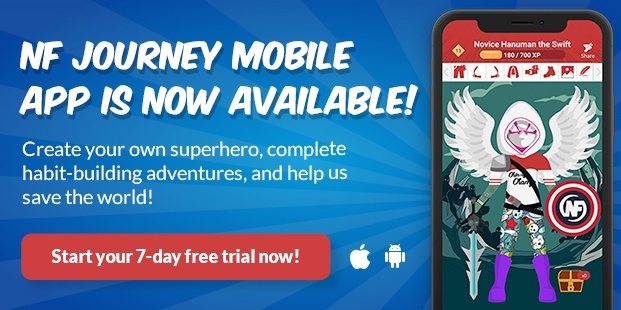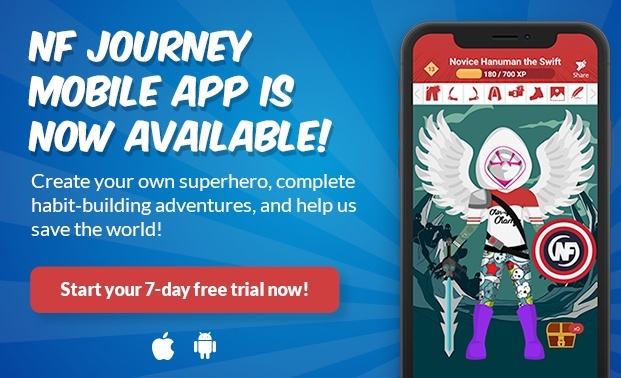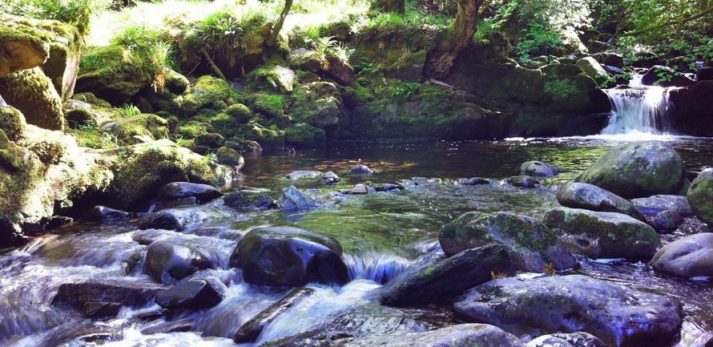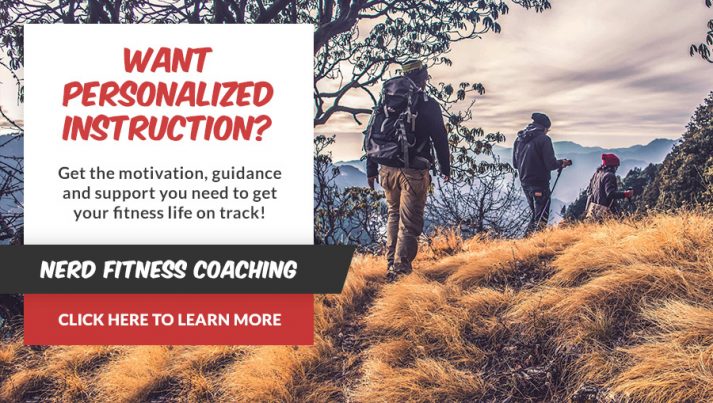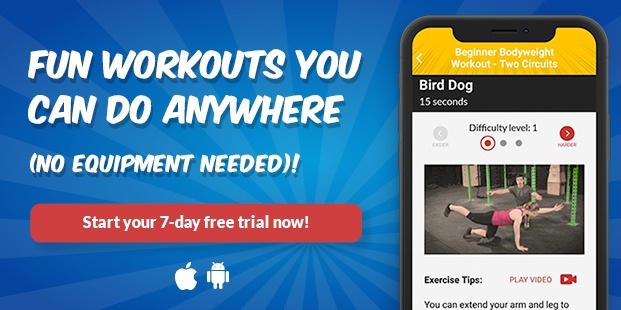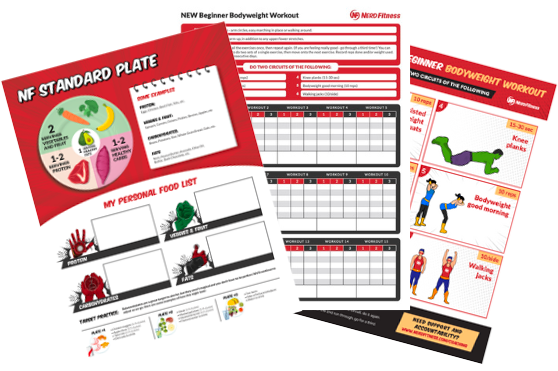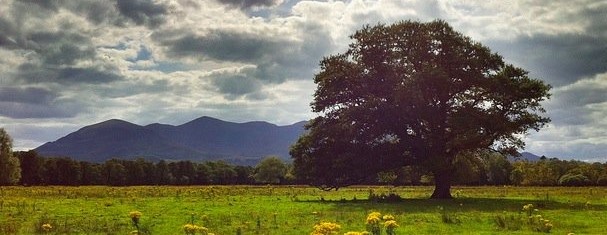
Before you step foot in the great outdoors, read this guide!
There’s nothing more embarrassing than a city slicker getting lost in the woods, so let’s make sure you know where you’re going, what to wear, and what to bring.
That way your first hike will be fun, adventurous, and more importantly safe!
Today we will cover:
- How Do I Find Hiking Trails Near Me? (How to Start Hiking)
- What Shoes Do I Wear Hiking? (Proper Footwear)
- What Do I Wear While Hiking? (Clothing)
- How Much Water Should I Bring on My Hike?
- What Gear Should I Bring on My Hike? (Sunscreen, Knives, and First Aid Kits)
- What Food Should I Bring Hiking? What Should I Eat on a Day Hike?
- 7 Hiking Tips for Beginners.
I’m happy you’re excited about hiking and I can’t wait for you to get started!
I took the above picture while hiking through Killarney National Park in Ireland many years ago, and every time I look at it, I can’t help but think of Tolkien’s Middle-earth masterpiece, so I apologize (not really) for all of the Lord of the Rings nerdery running throughout this post!
Our community members love hiking too. In fact, one of our recent success stories specifically cited hiking as one of the fun activities she loved to do to help her lose 50 pounds:
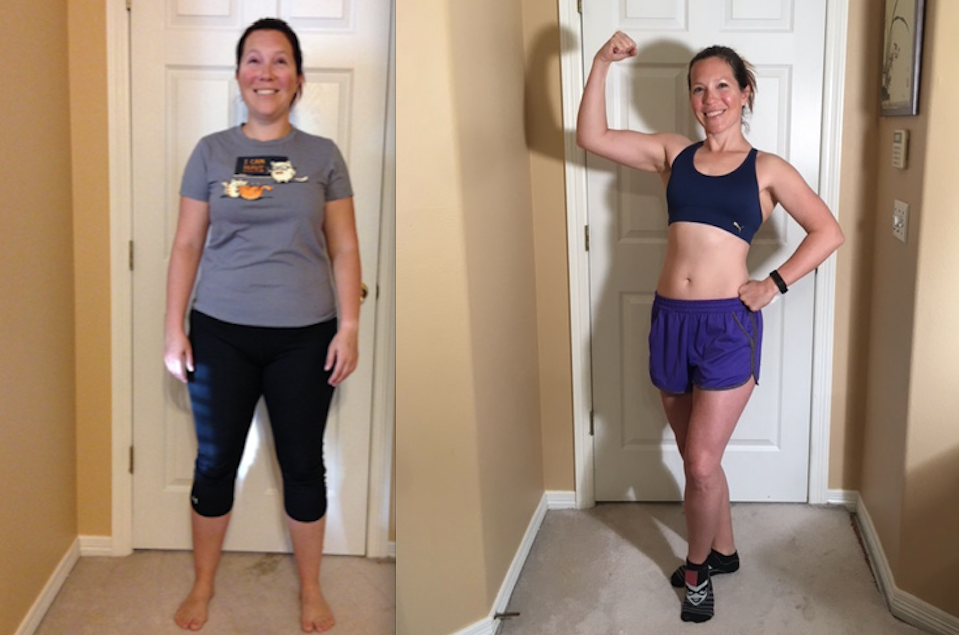
By the end of today’s post, my goal is to have you pick a trail, pick a date, and identify a fella or gal to join your fellowship (galship?).
Before we jump in, are you here because you’re learning to hike to lose weight? Did you hear it’s a fun way to exercise and get your body moving?
If so, you’ve come to the right place!
As I mentioned, some clients in our uber-popular 1-on-1 Online Coaching Program used hiking as part of their weight loss training. These folks would rather head outside than jump on a treadmill, and our coaches designed a program so they could do just that!
Here’s how it works: your NF Coach will build a custom workout plan based on your experience level and goals. Training to climb up a literal mountain? Maybe you need to get rid of an old ring? We’ll create a plan to get you to the top!
Alright, let’s get you hiking!
How Do I Find Hiking Trails Near Me? (How to Start Hiking)

When you think of hiking, you might imagine a bunch of road-tested perma-travelers with oversized backpacks, hiking through epic mountains for weeks upon weeks at a time.
Or maybe, a pair of hobbits setting out on a worldwide adventure to destroy a ring of awe-inspiring power.
If you’re just beginning your journey to a better lifestyle, just thinking about serious hiking can be enough to keep you inside your comfy hobbit hole.
Although hiking can be an epic undertaking, it doesn’t need to be!
A hike also can be super simple and fun:
- A quick jaunt (such a great word, right?) around your local park after work.
- Exploring the woods behind your house with your kids on a Saturday morning.
- A half-day hike with your friends on a fun nature trail.
- A full day or overnight hike that also includes camping.
Here’s my definition for hiking: A person (or halfing, or self-aware robot) exploring their surroundings and their feet are on the actual ground. Like, dirt. And grass.
Some might say it needs to be difficult, have a certain elevation change, require a blah blah blah. It literally doesn’t matter.
What matters is that you go outside and do something you wouldn’t have done otherwise.
Here in the Nerd Fitness Rebellion, hikers would fall into the Adventurer class.
If you’re looking for a fun “cardio” activity and want to exercise in a way that’s exciting, hiking is a great way to get your legs, feet, and body used to some strenuous activity.
You get to pick your speed and difficulty, and you can always find the right amount of challenge for you.
HIKING 101: 5 STEPS TO PLAN OUT YOUR ADVENTURE
1) Decide how long you have to hike
This is a beginner’s guide to hiking, we’re not looking to hike the Appalachian Trail.
Instead, we want to start with trails that can be done in less than a day, that won’t require you to pack a tent, or bring an extra change of clothes. Pick a hike based on how much time you have – do you have the entire Sunday? Or do you just have a few hours on a Tuesday afternoon? It took Frodo and Sam 6 months to get to Mordor, but you probably don’t have that much time.
However, if you DID want to “walk to Mordor,” I got you covered there too. You’re welcome!
2) Decide if you’ll be hiking solo or with a friend/group
I love hiking solo – it’s mobile meditation for me. However, it’s also more dangerous should anything happen while you’re out on the trail! If you’re heading into the wilderness, I’d recommend buddying up with a friend or your significant other for your hike. It’s the perfect bonding opportunity. This is especially true if they have more hiking experience or they know the area that you’re hiking in.
3) Determine your level
If you are a hiking newbie and out of shape, sending yourself out on an eight-hour hike through the unmapped wilderness isn’t a great idea.
Start slow, and pick places around your town that will allow you to stop when necessary and get back to your car or home quickly. No need to be a hero; it’s always better to come back excited and say “wow that was easier than I expected!” than to realize you’re six hours from home and out of steam. Well, being a hero is cool. But not THAT kind of hero.
4) Pick your hiking location
Keep it simple! Go to AllTrails.com, put in your zip code, find your hiking trail!
Or pull up Google Maps and look for big green plots of land. We call those “parks.” Google the park name, learn about it, and decide if that’s where you want to go. Do not overcomplicate this step. Just get started.
Ask your active, adventurous friends or coworkers if they know any good spots.
The world is FULL of hiking trails and awesomeness – you just need to know where to look.
5) Regardless of where you are going, let somebody else know where and when
If you are out hiking alone, take the time to email or call somebody and let him know that you’ll be hiking and when you expect to be back.
We don’t want to hear about any 127 Hours[1] stories on NF…that would make playing video games way more difficult.
You don’t need to tell them the brand of your underwear (please tell me you’re wearing underwear) or how many almonds you’re bringing, but let them know the important details so if they don’t hear back from you by a certain time they know to alert the proper authorities.
So right now, you should have answers to the following questions:
- How much time you can dedicate to hiking.
- Who you will be hiking with.
- Your level of experience
- Using AllTrails.com or GoogleMaps to pick your hiking location.
- Who you will tell about your hiking experience.
- How much XP will I earn by doing this?
That last point is about our fun new habit-building app, which allows you to level up (literally) by going on walks or hikes.
You can try it for free right here:
What Shoes Do I Wear Hiking? (Proper Footwear)
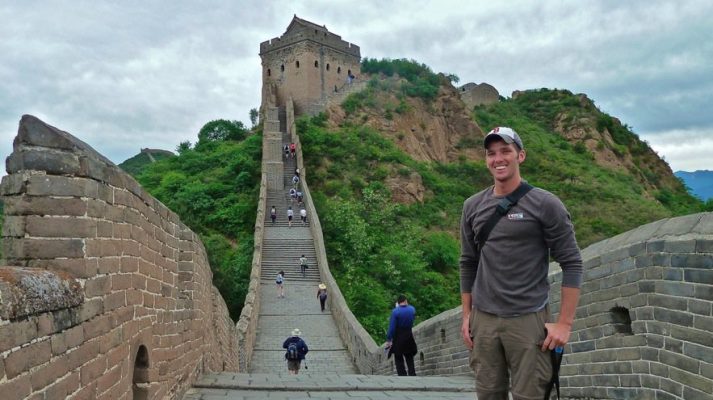
This is simple: stilettos, your favorite mini skirt, a fishnet halter top, and a vest made out of raw meat. You’re welcome!
Wait, don’t do that.
I’m a big fan of being comfortable without breaking the bank. Like, you probably already have most of the clothing you need to go hiking.
WHAT SHOES SHOULD I WEAR TO HIKE IN?
We cover footwear extensively in our healthy feet article, but I’ll cover shoes specifically in the case of hiking here.
We at Nerd Fitness are huge fan of Merrell products – Merrell shoes of various types have treated me well for the past decade.
Just don’t let a lack of quality hiking boots keep you from a hike. If you’re concerned, pick an easy-paced hike with your current shoes to be safe and ramp up when you can ramp up your gear!
Some people hike the Appalachian Trail in their bare feet (must be part-Hobbit), so whatever you do: don’t let your footwear options keep you from getting started. Just make sure you break your shoes in and take them on test drives! Don’t take the tags off a new pair of shoes and then go on a multi-day hike – that’s a recipe for blisters and a miserable time.
Okay, let’s look at our feet.
Now that we’ve done that, let’s look at some shoe options:
LEVEL ONE: Hiking shoes – “hiking shoes” are great if you’re going to be doing simple day hikes or hiking occasionally: they have a good grip on the bottom, give you enough support, but aren’t too heavy that they are a hindrance.
Here are my favorite options if you are in the market for some new basic walking/hiking shoes:
- Merrell Vent Hiking Shoe
- Merrell Trail Glove 4 (Men) – I have the blue ones. They rock.
- Merrell Trail Glove 4 (women)
Oh, what’s that? “Steve, I don’t have hiking shoes! Is this the end of the world?”
Well, do you have any sort of athletic shoe? Depending on the grip on the bottom, they could be decently okay for you to get started with when it comes to a basic hike. If sneakers are your only option, lace em up, pick a beginner hike, and see how they do. Just be careful on slippery surfaces – your kicks might not give you the grip you need to get over them.
LEVEL TWO – Hiking boots – I don’t hike enough or do enough multi-day hikes to justify the cost of hiking boots, but again I would point to Merrell boots if you’re in the market.
“Why boots over shoes, Steve?”
Although many prefer trail shoes (like yours truly), I can absolutely see the value in a great pair of hiking boots if you’re going on a serious hike, traveling for multiple days, or more. They have more ankle support, thicker tread, thicker shoes, and provide your feet with significantly more protection.
REI has a great article helping you pick between Trail shoes and Trail boots. My advice? Start with what you currently have before deciding whether or not to invest in big boots. Once you build up the habit of hiking and decide you want to make it a bigger part of your life, you can make the investment.
My advice? If you are going to buy boots, go to a professional store, get fitted properly, and then break them in over many weeks before going out on a trail.
WEIRD BUT FUN FOR SIMPLE HIKES: Vibram FiveFingers – I hiked all around the globe, in various situations, wearing my Vibrams for close to 4 years. They made me feel like a ninja monkey and a hobbit. I got weird looks, but something just felt right about being able to feel the contours of the ground beneath me. I will say, when hiking in Vibrams it can be easier to twist an ankle when stepping on a root or rock, stepping on sharp rocks can hurt, so I found myself watching my feet much more than expected.
These days, I’m much more of a trail shoe kind of guy, but some still swear by Vibrams!
If you’re in the market for buying new boots, this quick video is a good primer:
WHAT SOCKS SHOULD YOU WEAR?
If you’re wearing boots or sneakers, you want to wear socks that aren’t going to give you blisters or make your feet all sweaty and gross.
Depending on how long the hike is, how serious you are about hiking, and your budget, you can look into merino-wool socks.
Like the rest of your outfit, what you wear on your feet will largely be dependent on a few things:
- Weather! Are you hiking in the forest and it’s 72 degrees out? Or are you hiking up the side of the mountain in cold conditions?
- Shoes! Are you in lightweight hiking shoes, lightweight hiking socks for the win. Hiking in big boots in cold months? Big thick warm socks are almost a requirement.
- Budget! Are you shopping for specific socks? Tall or short? Great. If you are brand new to hiking, just wear whatever athletic socks you wear while exercising.
- What’s the environment? If you’re hiking through grass, tall plants, etc. I’d go with tall socks (with your pants possibly tucked into them too). You’re not out there to win a fashion show!
Here’s Switchback Travel’s best hiking socks of 2018, and here’s a great article from Art of Manliness on proper feet care after a hike or ruck!
What Do I Wear While Hiking? (Clothing)
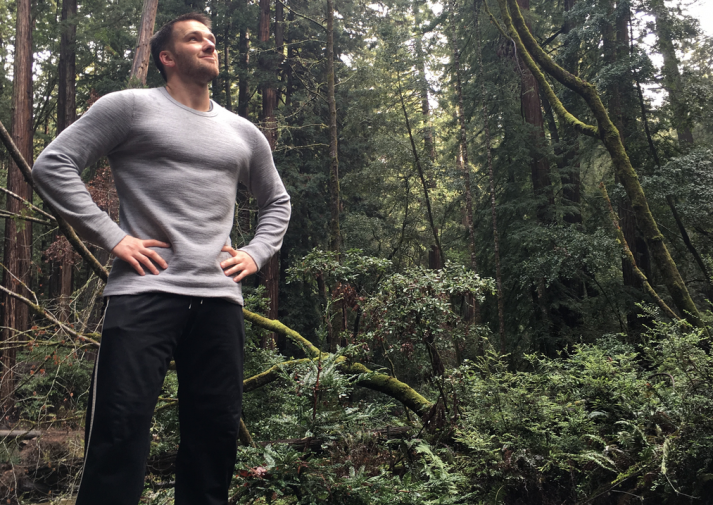
SHOULD I WEAR PANTS OR SHORTS?
Pro tip: Don’t go pantless through the wilderness. I cannot stress this enough.
The real advice when it comes to pants/shorts is heavily dependent upon your environment. If it’s going to be cold, shorts might keep you shivering. If it’s going to be hot, pants might get too uncomfortable.
Jeans? Ehhhhh. Sure. ONLY if it’s going to be a comfortable temperature and you have no other option. Being sweaty and hot while wearing jeans isn’t very fun.
I’m a big fan of my nerd pants – the Columbia Silver Ridge pants. Although they look kind of goofy, they’re incredibly lightweight, dry quickly, and can transform from pants to shorts in mere seconds!
Traveling through woods, not sure what you’ll encounter? Wear lightweight pants. I am horribly allergic to poison ivy and who knows what else, so I like to keep as much of my body covered while hiking to make sure I don’t make contact with anything I’m allergic to. [2]
WHAT TYPE OF SHIRT SHOULD I WEAR?
My favorite options are merino wool long shirts and t-shirts: they’re light, wick away moisture, hide odors, and breathe well – though you will be paying top dollar for them.
If you’re just starting out, pick an old t-shirt and rock that – you can work on optimizing performance once you’ve got a few hikes under your belt.
If you’re on a multi-day hike in various conditions then having lightweight merino wool shirts you can layer and not need to wash would be great. But just going for a hike in the woods in your backyard? Whatever you would wear while running, training, etc. Aka whatever won’t chafe!
SHOULD I BRING A JACKET?
I’ve been wearing this Mountain Hardware jacket on most of my hikes and it has been awesome (10 years and counting) – very lightweight so packing it isn’t a hassle, waterproof so it keeps me dry when it rains, and heavy enough to block the wind to keep me warm when it’s chilly.
Don’t go out of your way to buy a new jacket if you have a decent windbreaker, but if you’re going to be doing a lot of hiking or you’re in the market for a new coat, here’s my advice: go to a local store and try out all of the jackets until you find one you like.
Once you find the perfect jacket, go home and check online (you can sometimes find the same jacket for up to 60% less) – then, ask the local store if they’ll price match or just buy it online.
SHOULD I WEAR A HAT?
You should definitely bring a hat. I’m usually rocking my Nerd Fitness hat or my Red Sox hat (booo Yankees), but while hiking in Australia I wore a hat with a giant floppy brim to keep my ears and face protected from the sun.
The tops of your ears and back of your neck are highly susceptible to getting burned while on the trail, so either get some sunscreen or wear a hat that keeps them covered.
The same is true for keeping pesky things out of your hair, the sun from burning your ears and face, and keep you a bit cooler.
WHAT KIND OF BACKPACK SHOULD I BRING?
Digging into the ins and outs of backpacks is far beyond the scope of this article. I’d recommend you check out my friend Chase’s Bag Review Youtube channel – guaranteed to be the most fun you’ll ever have learning about bags.
So what would I recommend for a beginner on a hike? The bag you currently have! If you’re going on a short hike, you can start with simply whatever bag you have. The lighter and comfier it is, the better.
Multi-day hikes where you’re living out of your bag, packing up, and building a tent each day – this is beyond the scope of this article. I have rocked a Kelty Coyote bag that I’ve lived out of for months at a time, and have also used on multi-day hikes.
If you have the means and the time, and you’re planning to go on certain hikes, go to an outdoor specialty store, speak with a professional, and get fitted for your body type and the type of hike you’re doing!
THE MORAL OF THE STORY: VERSATILITY
If your weather forecast is “75 and sunny,” and you’re hiking for the afternoon through a gradually sloping wooded forest, you can severely limit what you’re bringing with you.
If it’s questionable or looks like things might change during the day, versatility is your best bet – a jacket, pants that can become shorts, a long sleeve shirt that you can take off or roll the sleeves up, etc.
Don’t go out and buy all new stuff until you’re sure hiking is an activity you want to invest in. Borrow from friends, make do with what you have
Just get started.
BY NOW YOU SHOULD HAVE A ROUGH IDEA OF WHAT YOU WILL BE WEARING!
In your head you should be saying, “Steve how can you read my mind?!
I just decided:
- I’d hike in my current gym sneakers.
- I have a pair of gardening pants and tall socks I can wear.
- I have a floppy hat.
I feel like I’m good to go!”
Perfect.
- 15 Fitness traps you should avoid
- Comprehensive beginner's guide to Paleo diet
- BONUS: How to level up your life and be the hero of your own story
How Much Water Should I Bring On My Hike?
If there’s ONE thing you should not leave home without, it’s a water container so you can stay hydrated.
“How much water should I be drinking on my hike, Steve?”
Great question. I knew you were smart from the moment you started reading this article.
You should be drinking 1 liter of water every two hours as a rough guideline. Increase this amount if you are hiking in very warm/desert climates.
FAVORITE WATER CONTAINERS:
I’m partial to stainless steel bottles or aluminum bottles over Nalgene or reused plastic bottles, but make do with what you have. Just make sure you bring enough water with you to keep you hydrated through your adventure.
Going on longer hikes?
Get yourself a hydration backpack (which can double as your hiking pack!) to transplant water more conveniently.
Not only that but make sure you have been consuming water before you go hiking so that you’re not starting at a hydration deficit.
Hangovers + early morning hikes – water = bad news bears.
What Gear Should I Bring on My Hike? (Sunscreen, Knives, and First Aid Kits)

If you’re just getting started, I’m going to guess you won’t be climbing to the top of a mountain in Alaska, but rather going on an introductory hike that will help build your confidence and get you rolling.
Here’s what I’d recommend you bring with you on your adventure:
- Sunscreen – If it’s sunny outside and you’re hiking through the woods or up a mountain with a cool breeze in your face, you probably won’t be able to tell that your ears and face are getting absolutely torched. Get yourself some waterproof sweatproof sunscreen (SPF 30 minimum) to cover up those ears, cheeks, and back of your neck.
- Bug spray – especially if it’s “that time of the year” in your area where bugs are out in full force. Nothing worse than coming home to arms and legs covered in bug bites.
- First aid kit – Having some first aid stuff with you is a good idea: band-aids and moleskin for blisters and cuts, Neosporin or some type of disinfectant for cuts/scrapes, and maybe a bandage or two just in case. Outdoor stores sell travel first aid kits (as does Amazon), but I’d advise you to make your own (you should have these things in your medicine cabinet anyway – and then you’ll know exactly where everything is!).
- Pocket knife – Not essential if you’re in a park, but a good thing to have with you out in the woods so you’re prepared for anything. Like McGyver.
- Sunglasses – No need to go blind while out on the trail. You probably already have sunglasses floating around your house: I’d recommend bringing the $5 ones rather than $250 Ray-Bans.
- Cellphone – a phone can help bail you out in case of an emergency, and if you have a smartphone it can multitask as your compass, distance tracker, mapper, and so on. Even if you have a cellphone, bringing a compass or GPS system isn’t a bad idea (unless it’s bright and sunny and you’re good at orienting yourself).
If you’re going on a longer hike, bringing a lightweight phone charger that you can use to charge your phone up quickly is usually pretty easy.
What Food Should I Bring Hiking? What Should I Eat on a Day Hike?
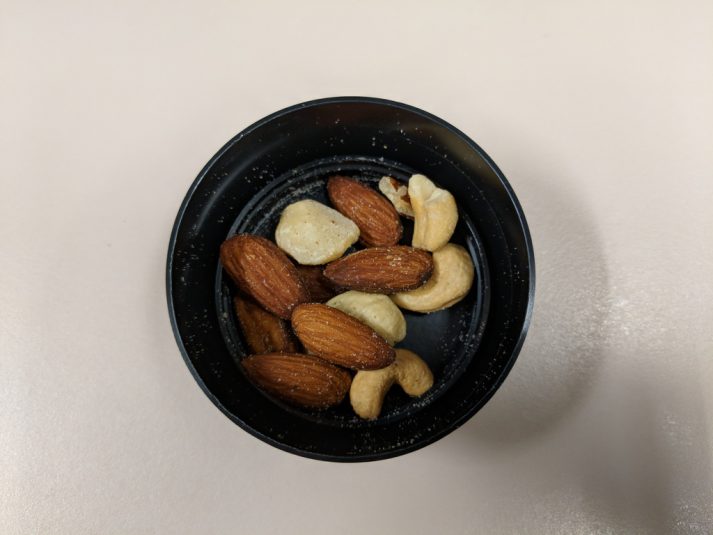
FOOD!
You know, the stuff that keeps us alive.
The answer to this will vary greatly depending on how long you plan on hiking for, the time of day, your love of snacking, so the advice here is going to largely mirror the advice we give in our nutritional posts!
Although by no means a complete list of snacks, this is usually what I like to pack in my bag before a hike:
- Nuts – Almonds or walnuts. Great for snacking on, loaded w/ healthy fat and protein. Nut butters are a good healthy fat option too – my favorite is Trader Joe’s raw unsalted almond butter. Ingredient: almonds! They are high in calorie content however, so if you are trying to lose weight, don’t do a 10-minute walk and eat 4000 calories worth of nuts. We in the business like to call that “counterproductive.”
- Fruit – I throw two or three apples in my bag; apples and nuts mean I’ve pretty much got all of the fat, protein, and carbs I need for my day. Things like bananas, raisins, and other fruit are good options as well – pick based on your personal preference and tastes. Just be careful with dried fruit, because it can have lots of sugar and calories, so don’t kid yourself into eating 5000 calories worth of dried fruit and call it healthy! It’s something we explore in-depth in our guide “Is Fruit Healthy?“
- Beef jerky! Make your own or go with some high-quality store-bought stuff. Lots of protein, easy to pack, and keeps well. Mmmmmm.
What about trail mix or granola bars? You’d probably think granola bars and trail mix are synonymous with hiking, but I’m actually not a fan of either unless they’re homemade – these products are usually loaded with salt/sugar and processed grains and are pretty damn unhealthy.
If you’re gonna go with trail mix, make your own with dried fruit and raw unsalted nuts. If you DON’T have other options, tossing a few granola bars in the bag isn’t the end of the world.
More food advice here:
A book (optional) – I LOVE READING (more than I love lowercase letters), so I always travel with my Kindle. Although hiking with friends can be fun, I also get a huge thrill out of hiking out to a remote location overlooking a valley or sitting on the edge of a river with a book so that I can spend a few hours getting lost in a story.
If it’s a multi-day hike and you’re avoiding technology, then bringing a dead tree book is worth the extra weight in your bag!
A camera (optional) – Although I have a camera that I travel with, most of the pictures I’ve been taking recently have been done with my iPhone using apps like Camera+ or ProHDR (which I freaking love). Both apps are worth the price.
You don’t need to be a great photographer, just need to capture the moment to look back on fondly as a crotchety old grandpa. Obviously, if you’re a serious photographer, you’ve already planned to pack your DSLR so I won’t get into that.
Seven Hiking Tips for Beginners

- KNOW THE LOCAL WILDLIFE! Do a quick search of your hike to know what sorts of critters you’ll encounter on the trail. If you are hiking in bear country or snake country, these are things it’s very important to know. Whether it’s carrying a can of bear mace or knowing what to look for, this can help you prevent serious problems. Also, watch out for wild ostriches.
- CLEAN UP, CHECK FOR TICKS – if you’re in a heavily wooded area and carving through the wilderness, check yourself for ticks and make sure you take a shower with hot water and soap immediately when you get home in case you came in contact with any poisonous plants or things like that. I can’t tell you how many times I woke up with a swollen face as a kid because of my hike through poison ivy the day before.
- AIM FOR THE HIGH GROUND – I love hiking to tall things: the top of a mountain, the high point in a town, the roof of a building. It gives you a great halfway point to stop, eat some lunch or dinner, and enjoy the view; plus, you already know exactly how far you need to go on your way down. One piece of advice on going DOWN a steep mountain or a lot of steps: Shorten your stride, and take care to land on the balls of your feet with a bent knee if possible – if you’re landing on your heels for thousands of steps, it can wreak havoc on your knees and joints as there’s no shock absorption. I remember how sore my knees were the day after hiking down Colca Canyon in Peru with my buddy Cash because I didn’t make an effort to soften my steps and take care of my body.
- URBAN HIKING – “But Steve I live in a city, I can’t go hiking!” Why the hell not? Load up your backpack, map out a route on Google Maps, maybe even find a tall building – avoid the elevator, climb the steps. Or walk until you find a park, sit on a bench, and read a book. Sure, it’s not the same as hiking the Rockies, but it will still get your heart pumping and feet moving! Like The Goonies teaches us, adventure can be found in your own backyard with the right attitude!
- KEEP TRACK OF IT – If you have an iPhone or Android, download a hiking or running app to keep track of how far you go and how much hiking you do. Although I haven’t been tracking my hikes abroad (I leave my phone in Airplane mode while traveling), I’ve heard great things about RunKeeper and EasyTrails. If you have more apps or suggestions on how to keep track of your hikes, let me know in the comments and I’ll add them here. I personally use a cheap Fitbit Flex 2, which tracks my steps and elevation. Good enough!
- GEOCACHING – Great fun can be had while geocaching. Simply go to the website, track your location, and then decide on which cache you’re going to track down. Think of it as a real-life version of Indiana Jones or Uncharted, minus the Nazis and undead warriors. We geocached around Sydney for a Nerd Fitness meetup, and it was delightful!
- GIVE A HOOT, DON’T POLLUTE – Pack it in, pack it out. If you bring anything with you, it better be coming back with you. Don’t leave trash in the woods, and pick up any extra trash you see out there. The wilderness thanks you for your service, citizen!
Not all those who wander are lost (sTART hIKING tODAY)
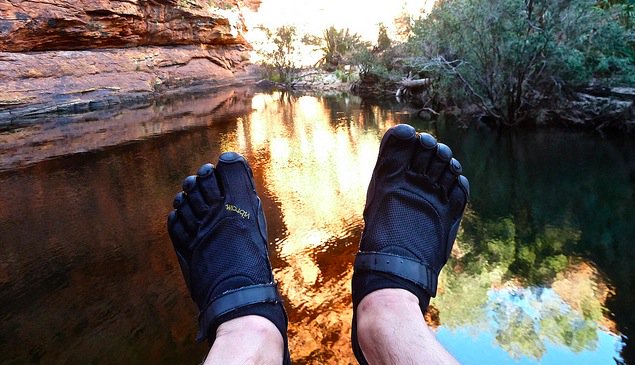
This article is just a primer, meant to whet your appetite and make you excited to go hiking and exploring the wonderful world around us.
Here are a few other resources on hiking if you want more information. Feel free to let me know more in the comments:
I challenge you to plan a hike for this upcoming weekend. YES, even if you’re in the opposite hemisphere and it’s really cold out!
Get some great snacks, strap on your shoes, grab a friend, and go explore.
I’d love to hear from you about the place you’re going hiking this weekend.
Leave a comment below and let me know:
- Where you’re going.
- When you’re going.
- And what you’re most excited about!
- Promise that you won’t hike pants-less.
- Any tips you have for your fellow hikers.
-Steve
PS: Still unsure if you’ll be ready for your big hike? I’ll again remind you of our 1-on-1 Online Coaching Program. We have clients who successfully used the program to train for hiking up large mountains, and we’d love to see if we can help you too!
PPS: If Coaching ain’t your bag, you can always use our new app to jumpstart your new adventures!
###
photo credit: 77krc Mixed Nuts
All other photos from my Photostream

